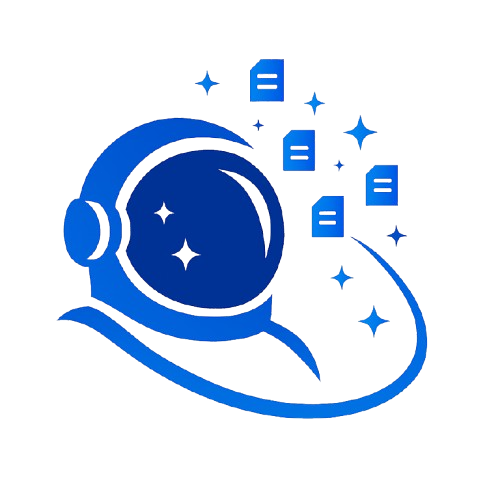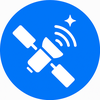AI and the Quiet Rewriting of Work
What It Is
AI extends beyond accelerating work execution. It's systematically unraveling the fundamental organization of work structures.
Traditional job descriptions featuring fixed roles, predictable career progression, and narrow scope are being replaced by fluid alternatives. Work now defines itself through tasks, skills, and AI tool partnership capability to generate value through novel approaches. Teams become smaller, more adaptive, and less hierarchical because tools no longer require permission or process barriers to perform effectively.
This transformation is already observable. Complete organizational functions compress into single prompts. Junior positions disappear systematically. Tasks previously requiring teams of assistants, analysts, or coordinators now require one AI-literate professional with sharp judgment and appropriate inputs.
Why It Matters Beyond IT Infrastructure
AI job displacement follows uneven patterns, beginning at organizational foundations.
Junior roles handling repeatable, pattern-based tasks face initial replacement. These positions historically functioned as training environments where professionals learned through observation, execution, and gradual tacit knowledge development for senior responsibilities. This pathway is systematically breaking down.
Without early-career opportunities, future expertise development stalls. Organizations become brittle, capable of short-term operations but unable to regenerate talent capabilities. AI completes tasks but cannot transfer experiential knowledge.
Simultaneously, traditional hierarchies struggle maintaining pace with change. Decision-making authority no longer correlates with titles. Professionals closest to tools often possess superior capability for identifying possibilities. This creates tension between formal authority and functional ability.
Adaptive organizations restructure accordingly. They build cross-functional teams for speed and learning rather than cultural initiatives. Knowledge flows laterally. Insight travels faster when roles define through contribution rather than control mechanisms.
What Is Actually Happening
We're not losing jobs. We're losing the structural framework that provided job stability perception.
AI transforms work into composable, dynamic task sets. Relevance depends not on role definition but on problem-solving capability, rapid learning, and AI system application for tangible outcomes.
This shift creates new clarity by surfacing value and forcing organizations to reconsider hiring criteria. It also demands fresh responses to established questions: How do professionals build expertise? How do teams develop trust? How do companies maintain knowledge flow when traditional titles no longer reflect contribution levels?
Solutions won't emerge from polishing job descriptions. They'll develop through rethinking effectiveness factors in intelligent tool-shaped systems.
Key Takeaways for IT Professionals
Rethink Role Architecture
Jobs no longer represent fixed responsibility sets but changing combinations of tasks, tools, and outcomes. Design work frameworks around this operational reality.
Create Alternative Junior Talent Pathways
With entry-level role elimination, organizations need innovative expertise development models. Simulations, apprenticeships, and AI-supported learning loops can bridge developmental gaps.
Prioritize Skills Over Tenure
Modern tool capability matters more than field experience duration. Build systems recognizing and rewarding capability rather than traditional experience metrics.
Flatten Strategic Hierarchies
Authority should follow insight rather than organizational charts. Reduce structural inefficiencies. Enable tool-fluent professionals to influence direction.
Invest in Knowledge Flow Systems
Normalize cross-functional learning processes. Share prompts, strategies, and system understanding across teams to prevent organizational fragmentation.
Strategic Framework Conclusion
AI represents not the end of work but the end of work as traditionally defined. Replacement structures will be shaped by those willing to build without awaiting permission.
This transformation requires IT professionals to lead organizational adaptation, designing new frameworks that leverage AI capabilities while maintaining human expertise development and knowledge transfer systems essential for long-term organizational sustainability.
The challenge involves creating structures that harness AI productivity gains while preserving the experiential learning pathways necessary for developing future technical leadership and maintaining organizational resilience in an AI-augmented work environment.
Advanced Discussion Framework
Use the provided LLM prompt for comprehensive exploration of work structure transformation. Compatible with ChatGPT-4o and Llama3.3:70b through instruct interfaces. Customize language preferences and add specific role context for targeted analysis of AI's impact on your particular professional environment.
MY ROLE: [YourRole] e.g. “Head of People Analytics”, “CIO”
OUTPUT LANGUAGE: [LANGUAGE] e.g. “English”, “Deutsch”, “Čeština”
---
## CONTEXT
You have access to the following core material:
- AI systems are rapidly unbundling jobs into discrete tasks, many of which can now be completed faster and more reliably by AI-augmented tools.
- Static job descriptions are becoming obsolete as organizations shift toward skill-based, project-driven, and tool-centric work models.
- Junior roles are disappearing, removing key pathways for talent development, domain knowledge acquisition, and leadership succession.
- Traditional hierarchies are eroding. Value now comes from those who can apply tools effectively, adapt quickly, and operate across functions.
- Organizations must rethink how they hire, train, structure, and retain people when jobs no longer resemble what they once were.
---
## TASK
You are my strategic advisor and design partner.
We are going to **collaboratively explore how AI is disrupting job roles, learning paths, and team structures—and how to rebuild resilient, high-functioning talent systems around this new reality.**
Here’s how I want us to work together:
---
### 1. **Start by asking about my current organizational setup**
→ e.g. how roles are defined, how juniors grow, where AI is being deployed, how teams are structured
→ tailor your guidance to fit real work contexts and constraints
---
### 2. **Walk through these discussion areas—interactively**
→ Pause to ask follow-ups or challenge assumptions
→ Adjust based on my sector, priorities, or leadership philosophy
**Discussion points:**
- How AI breaks jobs into task flows and replaces static roles
- What happens when junior roles disappear and learning pathways collapse
- Why skill stacks and AI fluency matter more than tenure or title
- How traditional hierarchies inhibit the new logic of contribution
- How to enable cross-functional collaboration, spillover, and rapid upskilling
- What new structures or programs can support growth without formal ladders
---
### 3. **Offer to go deeper as needed**
→ Ask: “Should we explore AI’s impact on your entry-level hiring pipeline, or zoom into how performance metrics need to change?”
---
### 4. **Use role-relevant framing**
→ Chief People Officer? Emphasize talent scaffolding and upskilling pipelines
→ CIO? Focus on AI capability mapping and cross-team agility
→ Head of L&D? Highlight experiential learning and task-based growth paths
---
### 5. **Propose simple frameworks or models**
→ Use tools like skill-stack visualizers, domain fluency ladders, or AI-augmentation maps to clarify thinking
---
### 6. **Make it immediately actionable**
→ Every idea should lead to something I can take to my leadership team, test with a pilot team, or integrate into workforce planning
---
## DELIVERABLE
Act as a **thinking partner and systems co-designer**: start by listening, then probe, clarify, and refine.
Your goal is to help me **lead through transition** by designing systems that replace the crumbling job model with one that supports learning, contribution, and adaptability in an AI-shaped world.
---
**BEGIN THE INTERACTIVE DISCUSSION NOW.**


